Once a week, the science technicians launch an ozone sensor attached to a helium balloon to measure the amount of ozone in the air. This sensor is called an ozonesonde. This week, our ozone sensor went up 20 miles (or 33 kilometers) into the atmosphere before it popped. All along the way, it was taking important measurements of ozone.
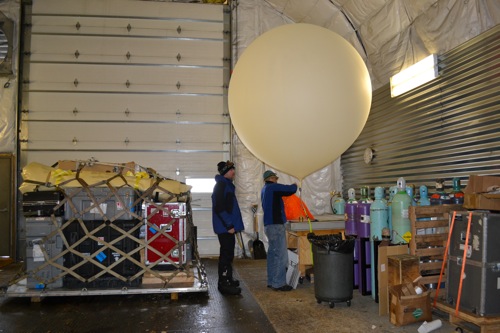
Do you know what ozone is? It is a natural gas that is found in our atmosphere. It can be good or bad, depending on where it is found.
OzoneOzone is a molecule made up of three atoms of oxygen. Ozone occurs naturally in the stratosphere and provides a protective layer shielding the Earth from harmful ultraviolet radiation. In the troposphere (the lower layer of the atmosphere up to approximately 15 km above the earth's surface), it is a chemical oxidant, a greenhouse gas, and a major component of photochemical smog. that is near the ground is not good for people because it helps make smog, which is not healthy.
OzoneOzone is a molecule made up of three atoms of oxygen. Ozone occurs naturally in the stratosphere and provides a protective layer shielding the Earth from harmful ultraviolet radiation. In the troposphere (the lower layer of the atmosphere up to approximately 15 km above the earth's surface), it is a chemical oxidant, a greenhouse gas, and a major component of photochemical smog. that is many miles high in the air is good for people. The ozone high in the air forms a thin shield called the “ozone layer” that blocks some of the Sun’s harmful ultraviolet rays from reaching earth.
In the 1980’s scientists began to notice that the ozone layer was breaking down, especially over Antarctica. They discovered that chemicals called chlorfluorocarbons (or CFCs) that were used in old refrigerators to cool food was one of the causes of the ozone layer breaking apart. Manufacturers are not allowed to use CFCs in new refrigerators.
You can find out more information about the ozone layer by visiting this website: http://www.epa.gov/sunwise/kids/kids_ozone.html
Scientists think that nature will repair the ozone layer by the year 2065. The weekly launches up here at Summit Station give scientists a weekly view of the ozone layer over the Greenland ice sheet.
It takes about one hour to get the ozone sensor ready to launch. It is much more involved than just filling the balloon with helium gas. The instrument that detects the ozone needs to be “calibrated” so that scientists are comfortable with the data that is sent back to earth.
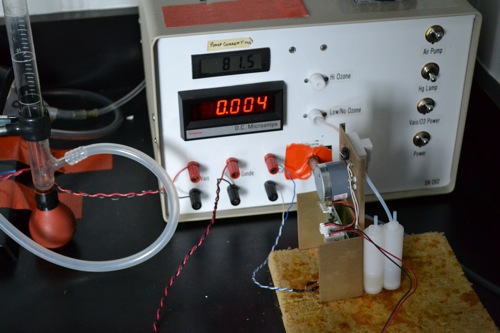
The science technicians also measure how fast the pump is sucking in air. It has to suck in air at just the right rate. Too fast or too slow will not work. They use soap bubbles to test this. Pretty cool!
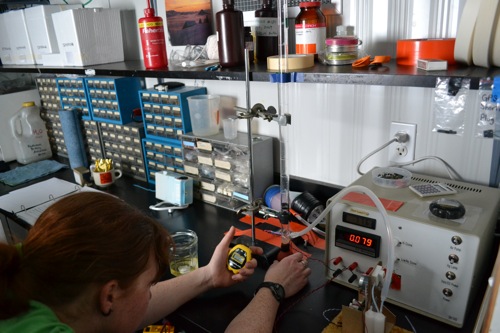
Once everything is ready, the sensor is attached to the side of a Styrofoam box.
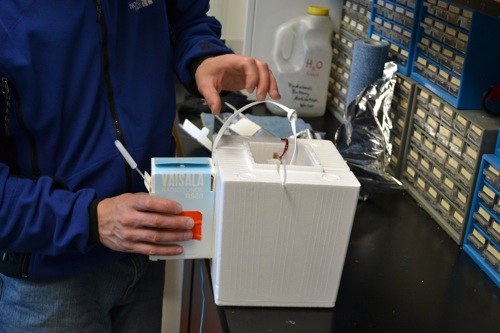
Then, after the sensor is attached to the balloon, it is launch time!
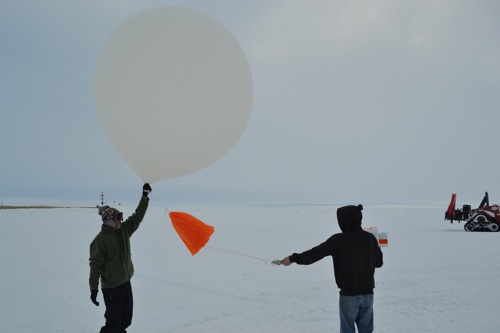


Comments